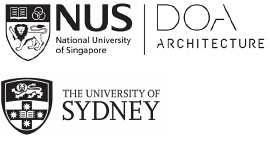Call for papers
Application deadline: July 20, 2020
At the School of Architecture, Design and Planning (University of Sydney), and online.
Earlier this year we proposed a CFP entitled “remote practices” to explore how architecture’s complex and distant interfaces are being intensified through a mass globalisation of the discipline. In it we sought to explore how the remote practice of architecture has become inherent in the way phases of early ideation to late production could take on surprising transformations as architects and critics use different tools to manifest ideas and imaginations to the otherwise distant and invisible; to design, describe and critique future and past constructions in absentia.
As people retreated to their homes in the recent pandemic, the business of doing architecture in schools and offices also shifted into their temporary holding spaces. It made many of the issues we wished to discuss in the original CFP more timely. Architecture, a discipline which thrives on expression and imagination, and which had already been remotely practised by way of translation across different media and sites, now takes on a further dimension of distancing; this time in the absence of a physical community of architects, designers, teachers and students.
The distances between these different modes of doing architecture—drawings, diagrams and models, manifestos and critiques in the printed form; augmented reality walkthroughs and digital films; digital prefabrication technologies, and the built form—create several thresholds by which architecture may already be understood as a remote practice. In the past few months the practice and education of architecture has faced a temporary cessation of travel, closure of many construction sites and an absence of office environments where ideas can be openly discussed and materialised through conversation. What are the local and global implications which the remote practice of architecture entails, for the pedagogy, practice and critique of architecture?
1. Pedagogy: What does it mean to teach design face-to-face, and what is lost in translation from a distance? What values might there still be for the haptic and analog modes of learning-through-making, in a shift from physical to virtual? What opportunities and new knowledges do remote practices offer for testing and running experimental ways of learning?
2. Practice: If anything, a pandemic has made the remote practice of architecture a global reality. Yet in these new norms, what might remote field-working methods offer as discoveries in lieu of access to real/physical sites? How would authorship in architecture be redefined? Are there precedents for new forms of collaborative authorship to emerge?
3. Critique: The architectural community has begun to critically reflect on the shifting spatial paradigms of inside-outside, private-public, and home-workplace that remote practices have emphasised. Yet, creativity and criticality may be risked in the distancing and fragmentation of education and practice. What alternative modes of creative energy and critical discourse might be borne from architecture’s contingent and emergent remote practices?
Abstracts of no more than 350 words, accompanied by an 80-word biographical profile, and 1 image (JPG, 300dpi) should be submitted to remotepractices [at] gmail.com by July 20, 2020. A publication of selected papers is planned. For more information and updates, please see https://remote-practices.com/
Keynote Speakers: Paul Emmons, CJ Lim, Joan Ockman, Jane Rendell, Naomi Stead, Philip Ursprung
Organising Committee: Lilian Chee, Matthew Mindrup, Eduardo De Oliveira Barata, Erik G. L’Heureux, Wong Zi Hao, RxD: Research by Design Cluster, DoA, NUS



